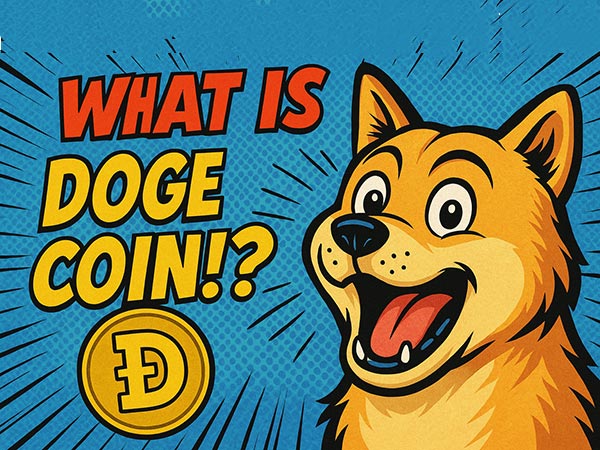What Is Dogecoin (DOGE)? In-Depth Analysis of Its Core Features and Diverse Use Cases

Dogecoin stands as a unique entity in the cryptocurrency space, with its core features primarily reflected in three areas: technological foundation, issuance mechanism, and cultural identity. From a technical perspective, Dogecoin is a modified version of Litecoin, utilizing the Scrypt algorithm. This choice allows it to maintain lower transaction fees and faster confirmation speeds. According to blockchain data, the Dogecoin network generates a new block approximately every minute, with transaction confirmations also taking about one minute. This supports its technical viability in small-scale payment scenarios.
Issuance Mechanism
Dogecoin initially had a cap of 100 billion coins, but later shifted to an unlimited issuance model with a fixed annual increase of 5 billion DOGE. This inflationary model contrasts sharply with the deflationary nature of most traditional cryptocurrencies, yet it also results in relatively moderate price volatility. As of August 2023, Dogecoin had a circulating supply of approximately 132 billion coins and an annual inflation rate of around 3.8%, which is significantly lower than that of most fiat currencies.
Core Use Cases and Practical Applications of Dogecoin
Dogecoin's real-world usage has evolved well beyond its origins as a joke, expanding into various practical scenarios:
Micro-Payments and Tipping
Thanks to its fast and low-cost transactions, Dogecoin is an ideal tool for micro-payments. On platforms like Reddit and Twitter, users frequently use DOGE for content tipping. Statistics show that in 2022 alone, over 8 million DOGE tipping transactions were conducted through social platforms.
Charitable Fundraising
Dogecoin’s community is renowned for its charitable initiatives. In 2014, the community raised about $30,000 worth of DOGE to fund the Jamaican bobsled team's participation in the Winter Olympics. In 2021, DOGE was raised to purchase medical equipment for India's COVID-19 relief efforts. These events highlight the philanthropic potential of cryptocurrency.
Commercial Payments
Despite its volatility, dozens of companies — including the Dallas Mavericks and Newegg — have accepted DOGE payments. Tesla briefly accepted DOGE for vehicle purchases in early 2022. Although the program was later paused, it demonstrated Dogecoin's potential in commercial applications.
Community Governance
Dogecoin holders can participate in project development decisions through community voting. The DOGE-1 satellite mission, approved by a community vote in 2023, plans to launch Dogecoin-related equipment into space.
Investment Value and Risk Assessment Framework
For those considering holding Dogecoin, it is advisable to build an evaluation framework based on the following dimensions:
Fundamental Analysis
Investors should monitor the development team's activities and network upgrade progress. Although Dogecoin's core development team is relatively small, several protocol updates since 2021 have significantly improved network performance. Attention should also be paid to the expansion of real-world applications, particularly collaborations in the payment sector.
Market Sentiment Monitoring
Dogecoin's price closely correlates with social media trends. Establishing a sentiment index tracking mechanism is crucial. Platforms like Santiment provide valuable social data. Historical trends show that peak Google search volumes for "Dogecoin" often align with short-term sell signals.
Key Technical Analysis Points
Technical analysis should account for DOGE’s volatility profile, which differs from BTC. Dogecoin's support/resistance levels often align with psychological price points (e.g., $0.10, $0.50). Volume changes significantly impact its price; when 24-hour trading volume exceeds $1 billion, it typically signals a potential breakout or reversal.
Risk Management Strategies
Adopt a dynamic position management strategy — reduce holdings gradually when DOGE breaks key resistance levels, and accumulate in stages during panic-driven market dips. Set strict stop-loss thresholds between 5%–8%. Avoid trading during periods of extreme volatility triggered by major social media events. For long-term holders, limit DOGE exposure to no more than 3% of the overall investment portfolio.
Future Outlook for Dogecoin
Dogecoin’s future development will depend mainly on three key factors:
First, changes in the regulatory landscape, especially regarding memecoin classification;
Second, ongoing expansion of practical use cases, including innovations in payment systems and NFTs;
Third, the health of community governance — the ability to maintain decentralized principles while implementing necessary technological upgrades.
Notably, as the cryptocurrency market matures, Dogecoin is transitioning from a mere internet meme into a digital asset with real utility. Its strong community base and brand recognition offer a unique edge for future development. However, the challenge remains to balance its entertaining identity with practical value. For investors, understanding this duality is crucial to seizing potential opportunities.
-
Sign Up

OKX
OKX is a leading global digital asset trading platform offering spot and derivatives services for cryptocurrencies.
-
Sign Up

Binance
Binance is one of the world's largest cryptocurrency exchanges, offering spot, futures, staking, and a wide range of digital asset services.
-
Sign Up

Bybit
Bybit is a global cryptocurrency exchange specializing in derivatives, spot trading, and crypto-financial products.
-
Sign Up

Gate.io
Gate.io is a leading crypto exchange offering diverse trading options, low fees, and strong security since 2013.
